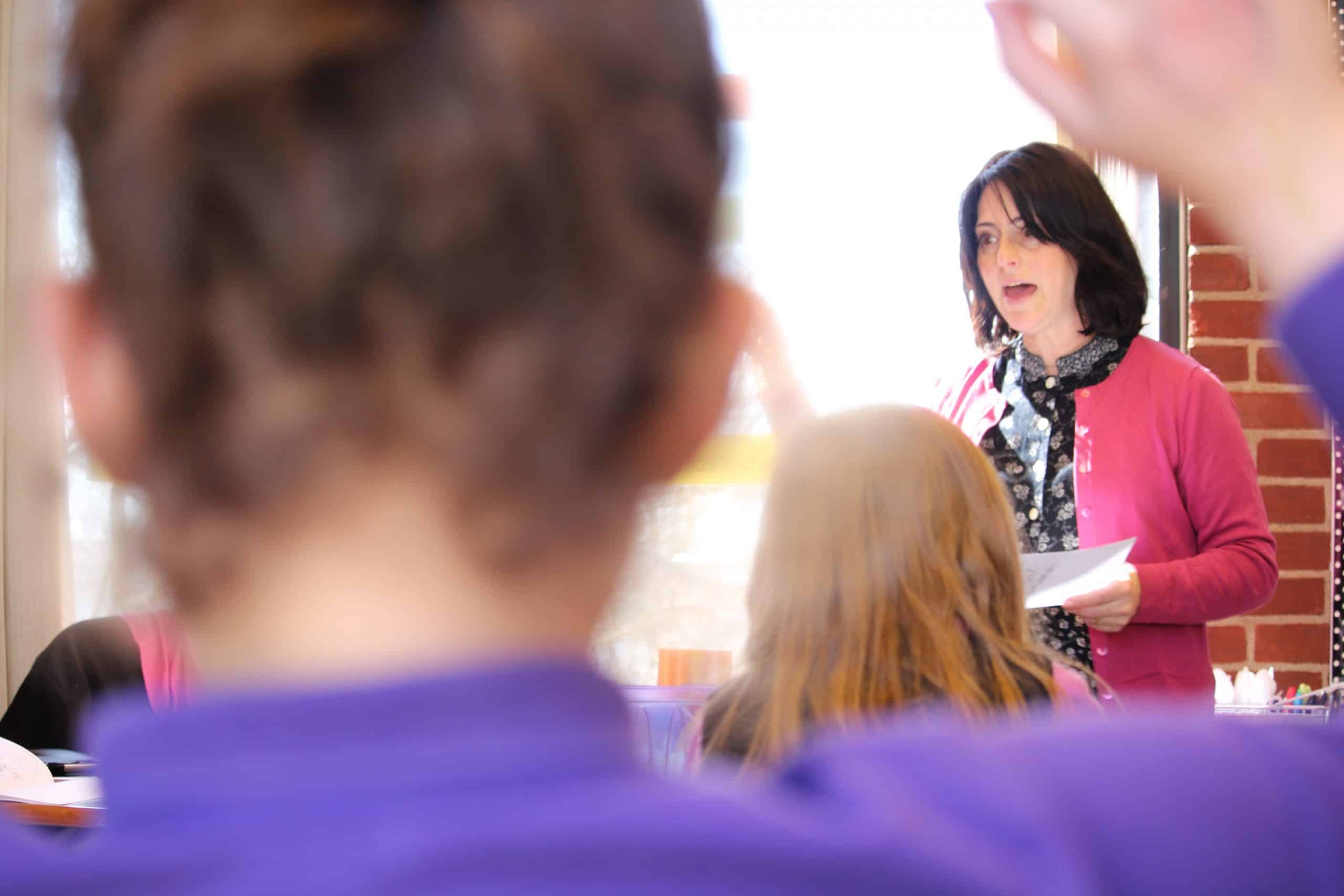
By Chanah Rose, as featured on Chabad.org:
The reality of distance learning has brought with it many challenges, discoveries and new experiences for parents and teachers alike. It occurs to me that there are four main ingredients to make distance learning successful, which we can then hope to apply back in our lives and classrooms once life goes back to some semblance of normal.
1. Choice: As soon as the schools closed, the floodgates opened with resources, videos, links and tutorials pouring in. For parents and teachers, it was an incredible opportunity to embrace the situation and offer students quality educational content. But it soon became apparent that tofasta meruba lo tafasta—“if you grab too much, you grab nothing.” We would need to choose.
Technology is defined as the skills, methods and processes used to achieve goals. Its strict definition says nothing about media, devices, gimmicks or moving screens. All of these things are useful inasmuch as they can help our children reach their goals. To this end:
- Parents: Select a menu of acceptable content for your children and let them choose. On a Sunday or school day when chores are done, you might say, we have time for three videos at x o’clock. The content should be meaningful and inspiring, and curating it sends the message that you are sharing it with your children because of its value, not simply to take up time.
- Teachers: Access to so many resources can help make your job easier and your class more engaging, and we hope that you continue to use them back in your classroom as well. As tools in your hands, however, it is up to you to choose resources based on their a) efficacy in attaining your goals; b) age-appropriateness; and c) quality and value. Also, grant choice to your students on what to access and how to complete assignments, whether as a written presentation or a PowerPoint one, as artwork or video. A student succeeds bemokom shelibo chafetz, “in the place of their heart’s choosing” (Avoda Zara 19a), i.e., when their learning involves a choice of their own.
2. Self-regulation. A whole slew of “soft skills” are vital in the physical classroom and much more so in life, which are highlighted by distance learning. In the current situation, no walls hold a student in his or her classroom, and frustration tolerance is in high demand. We can see this as an opportunity to build our children as people.
- Parents: When “homeschooling” began, I told my children that the two most important things for us to be successful during this time are to be organized and to be flexible. I chose these because these are two sides of the self-regulation coin that I knew our family would need to work on. We cut out dollars and distributed them when my children were organized (did homework without bidding, folded their own laundry or davened first thing in the morning) and flexible (did not melt down when the Internet crashed mid-lesson, calmly informed me of a missing worksheet that I forgot to print or dealt gracefully with a change in schedule). When the dollars accumulated, we assigned an exchange rate to keep things affordable and went to Amazon to choose well-earned prizes (learning a bit of financial management along the way, I hope).
- Teachers: Recognize how challenging this time period is for your students! Encourage, acknowledge, praise and reward not only academic excellence and acuity, but soft skills such as coming on time, remaining on task and self-sufficiency in their work. Articulate the things that will help your students succeed at this time, such as having a set place for all of their books and schoolwork, how to handle an interruption from a sibling, and the need to pause regularly for movement and healthy snacks. Hopefully, these new skills will carry over into the physical classroom as well.
3. Engagement. Technology can breed passivity; steer clear of that. Technology is at its best when it encourages active involvement and learning, and good old-fashioned engagement tools from pre-corona days are often effective in an online setting as well. Accountability is another form of engagement, as it ensures that students take responsibility for their role in learning.
- Parents: When a child says a d’var Torah at a Shabbat table, ask questions. When kids are viewing an educational video, let them know you would love to hear about their favorite parts at the end. When going on a nature walk, have them count the puddles they can splash in on a rainy day or the newly budding trees they spot on a sunny one. When baking together, children can count the eggs or convert measurements. Engagement and accountability turn any experience into learning.
- Teachers: Now more than ever, students need you to appreciate the model of “guide on the side” versus “sage on the stage.” As hard as it is to sit through a lecture in a physical classroom, doing so online is exponentially harder. Involve students through questioning and active learning. Check for understanding often through every means at your disposal. Hold students accountable, but only inasmuch as you involved them in the learning throughout.
4. Relationship. Relationship and connection is the foundation for all learning, especially learning about life, which is what ultimately our kids are looking to us for at this time. Studies show that students learn better in a positive emotional climate—that the emotional context is what ingrains certain experiences in our memories.
- Parents: No homeschooling, schedules, learning goals or anything else should get in the way of our relationship with our children. Make time every day during this challenging time to laugh with your children, be silly, tickle, sing, go outdoors together, snuggle and listen. If nothing else, just flash your kids a heartfelt smile whenever you can remember to. In our family, we each share the favorite part of our day at dinner time. This way, even if we were all cooped up indoors and even if there were too many meltdowns to count, everyone ends the day remembering the one activity or moment that made this day special and brought us closer together.
- Teachers: The kids need you now to be more than a conveyor of information. Start every day with greeting each student. Ask how they are faring in the current crisis. Ask about their life outside school. Compliment freely on mic, chat or a phone call. Ask them to bring pieces of their life into school in the form of show-and-tell, sibling day or parent-child events. Your smile needs to travel much further through that webcame than it ever needed to before, so pack it with as much love and warmth as you can muster to send it on its way.
We hope that those of us who have moved online from traditional schooling can move back as soon as possible, rendering the new distance learning no longer necessary, except for those who choose it. However, all four ingredients of distance learning are powerful drivers for brick-and-mortar learning as well. And all four of them bring one message home: Parents, teachers, the most decisive factor in any kind of learning—in school, at home or online—is you.
You hold the power to choose educational experiences, to nurture independence, to bring learning to life and life into learning, and to care. No technology, resource, homeschool schedule or anything else can replace or diminish the decisive role that you play.
Chanah Rose has spent over a decade working as teacher, curriculum writer, and teacher trainer in both in-person and online settings. As Educational Director of the Menachem Education Foundation, she strives to support teachers in providing the best possible Torah education to their students. Chanah enjoys writing and lives in Pomona, NY, with her husband and children.




